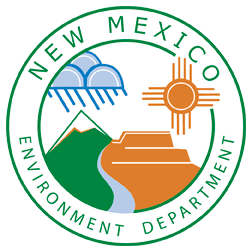Q. Why do i need to install a monitoring well(s)?
A. Regular sampling of ground water collected from monitoring wells is one way that NMED determines whether or not your discharge is affecting ground water quality.
Q. What is the difference between a water supply well and a monitoring well?
A. A monitoring well is a well that is used to sample water at the top of the water table, since that is where contamination that reaches groundwater will show up first. They are used for routine water quality monitoring, not water supply. Water supply wells are usually drilled much deeper and have longer screens in order to produce greater quantities of water.
Q. Can I use my water supply well as a monitoring well?
A. Generally, no. Monitoring wells are constructed and located specifically to detect ground water quality impacts early on, before a contaminant plume spreads. If you were relying on your water supply well for this purpose, by the time a problem is detected, the contamination could be much harder to address.
Q. Do you have a list of drillers?
A. Drillers must be licensed by the New Mexico Office of State Engineer (OSE), which maintains a database of licensed drillers, you can find a driller through the OSE website (www.ose.state.nm.us)
Q. What information do I provide to the monitoring well installer?
A. Provide a copy of NMED-GWQB’s Monitoring Well Construction and Abandonment Guidelines found at www.env.nm.gov/gwqb/permits. The well driller should adhere to requirements of The Well Driller Licensing; Construction, Repair and Plugging of Wells regulations (19.27.4 NMAC)
Q. Why is the survey and map of ground water flow direction and gradient required?
A. Ground water flow direction varies regionally, locally, and in some cases seasonaly. NMED uses the survey and map to determine whether the monitoring wells are placed correctly.
Q. What if I try to sample my monitoring well but it is dry?
A. If the well goes dry while you’re purging, wait until it fills up again and continue. If it takes a very long time to recover, you may have to reduce the amount of water you purge before collecting a sample (contact NMED to discuss) Make sure to note the volume of water you were able to purge before sampling and the reason it’s less than the required purge volume. Submit this information with your monitoring report.
If the well is dry when you start the sampling process, make note of the well number, location, and total depth and report it as dry to NMED when you submit your monitoring report. If the well continues to be dry for several consecutive sampling periods, you may be required to drill a new well.

